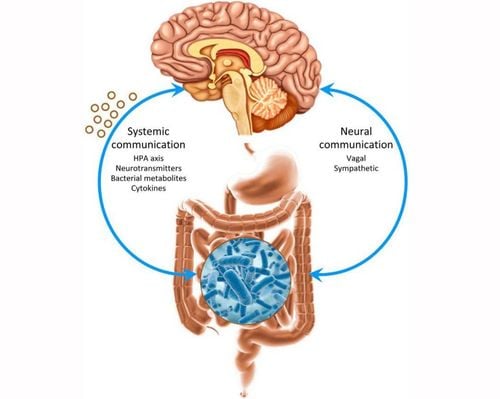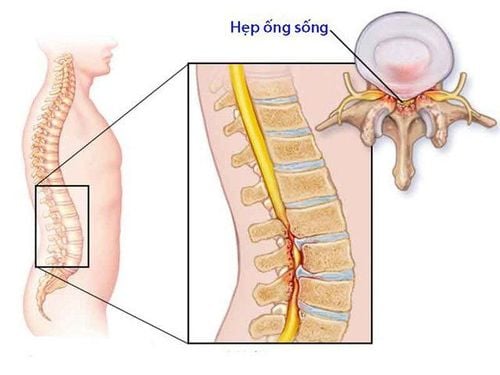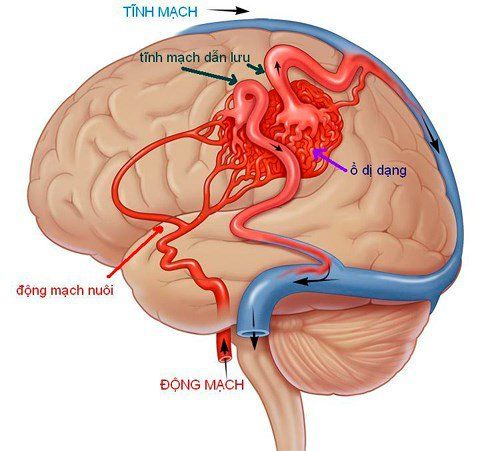This is an automatically translated article.
The article was professionally consulted by MSc Huynh An Thien - Department of Medical Examination and Internal Medicine, Vinmec Danang International General Hospital.Brain white matter disease is one of the rare and dangerous diseases. Because the disease originates in the brain, the disease can affect all other parts of the body.
1. What is brain white matter damage?
Leukoencephalopathy is not a single disease but encompasses a general group of conditions that affect the white matter (leuko) of the brain, usually the spinal cord.White matter brain disease is caused by abnormal growth of the myelin sheath, which acts as a protective covering around nerve fibers, causing white matter degeneration. From the initial few millimeters, the area of damage extends to the posterior pontine crest and the bilateral cerebellar peduncle and to many other areas around the brain. This white matter damage or degeneration causes central nervous system inflammation, brain damage, and cerebral palsy. Communication between the nervous system and the brain is disrupted.
The disease can be seen in people with malnutrition, water-electrolyte disorders and hyponatremia. To date, scientists have not been able to determine the true cause of this disease.
2. Is brain white matter damage dangerous?
Leukemia causes impaired vision and hearing as well as reduced motor functions. This is a fatal disease, the life expectancy of the patient depends on the age and the type of brain damage. If it is an infant, it can prolong life from 2 to 8 years, while adults have a chance to live longer (from 12 years or more). The disease worsens over time, when nerve tissue cannot function properly. The disease can be passed on from parent to child.The scariest thing is that world medicine has no successful treatment for white matter lesions. Most patients, when diagnosed with the disease, only have to live with the disease, prolonging their life as long or so.

3. Diseases of brain white matter damage
According to recent reports, there are about 30 different types of the disease. Some of the more common types of the disease can include:3.1 Adrenal white matter lesions (ALD) Adrenal white matter lesions are one of the more common types of disease, affecting the male sex (X gene) . The disease is usually found in boys, symptoms usually appear before the age of 10, progresses rapidly and affects the adrenal glands, limiting the production of the hormone cortisol. In adults, the genetic change can lead to adrenal gland disease, which affects the adrenal glands and spinal cord.
3.2 Canavan's disease - Spongy white matter damage, spongy degeneration of the nerve shaft This disease causes abnormal growth of myelin. Spongy degeneration leads to decreased muscle tone, sclerosis, visual atrophy, head big. The condition may worsen over time, leading to spastic paralysis. The life expectancy of the disease is very short.
3.3 Heterochromic white matter lesion (MLD) This is another common form of the disease, which is classified into several different subgroups. Most of the subtypes are related to age such as: infancy, adolescence and adulthood... In the case of heterochromic white matter lesions in infants, the first sign is skill loss. motor and speaking skills.
3.4 Krabble's Disease - Globular white matter lesion This lesion affects the myelin of the peripheral and central nervous systems. Approximately 90% of the reported cases of the disease are in infants with signs and symptoms appearing before 6 months of age.
3.5 Vanishing white matter disease The disease is also known as cerebral demyelinating ataxia in children. This leukocytosis occurs during the first 5 years of life, progresses rapidly, and affects motor and speech skills. This form of the disease also occurs in adults but is rare, hindering the development process.
4. Symptoms of brain white matter damage

Cognitive impairment Developmental regression, meaning loss of previously acquired skills formerly Spasticity Problems with motor skills such as walking, running, jumping... As the disease progresses, the more the nerve area is affected, causing the child to have severe cognitive impairment or dementia wisdom. When the disease is in the full-blown stage, patients, especially children, may have reduced language ability leading to dumbness, difficulty speaking, difficulty swallowing food, paralysis of lip muscles, not smiling, not crying... Other symptoms include:
Impaired physical and mental growth Abnormal body and muscle tone Shortness of breath Sphincter disorders: Need to urinate right away or slow to urinate, other bladder problems . Reduced vision or hearing Difficulty or inability to walk Brain damage: Epileptic seizures, intellectual disturbances, mania Sensory impairment: Primarily somatic paresthesias such as constriction part of the body, the pain felt like an electric shock from the neck to the foot. Master Doctor Huynh An Thien has strengths and experiences in examination, consultation and treatment of neurological diseases; respiratory and endocrine-metabolic diseases
Before being a neurologist at the Department of Medical Examination and Internal Medicine - Vinmec International Hospital Da Nang, Dr. Thien used to have long working experience at the hospital Hue Central.
Please dial HOTLINE for more information or register for an appointment HERE. Download MyVinmec app to make appointments faster and to manage your bookings easily.














